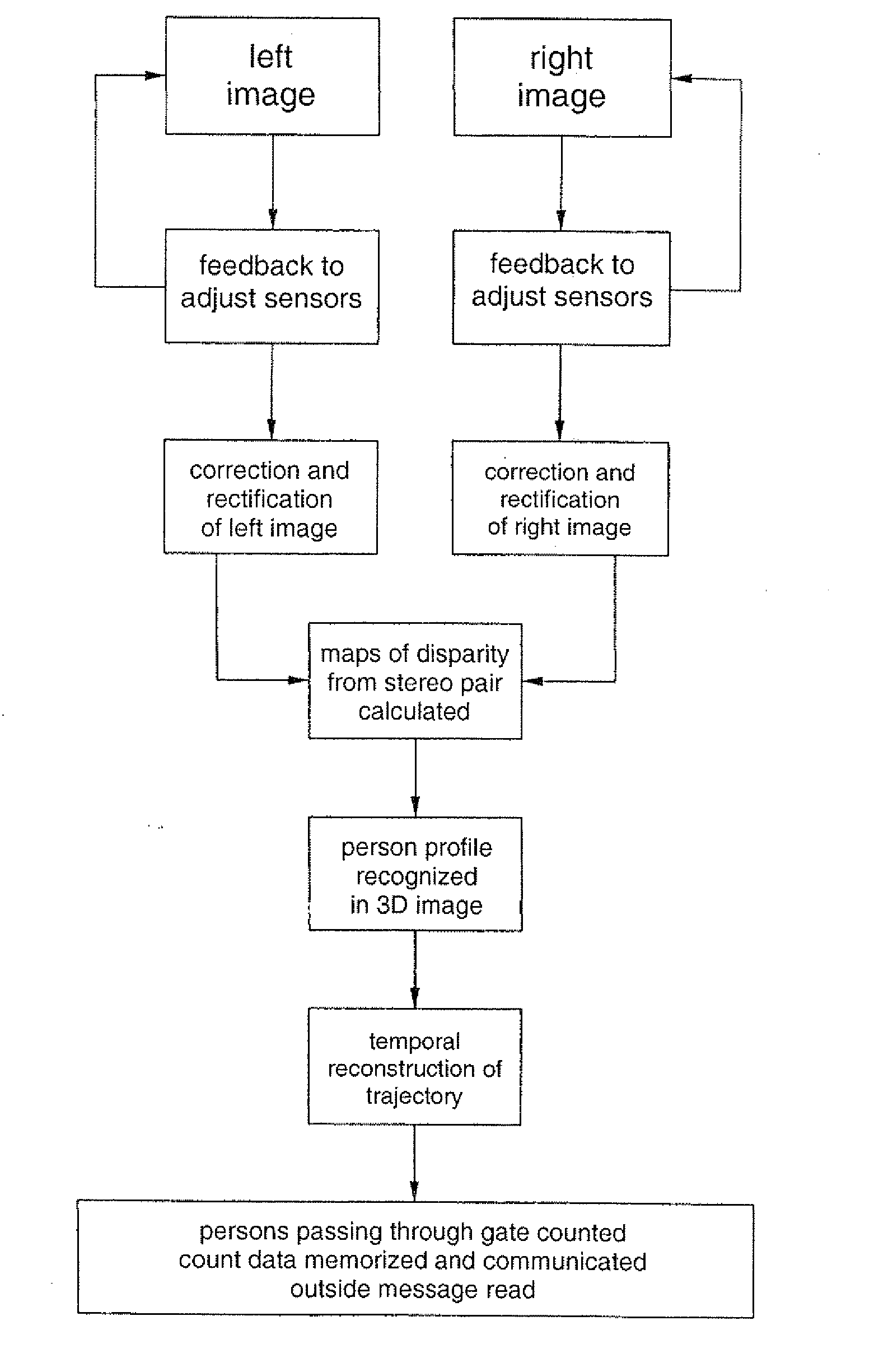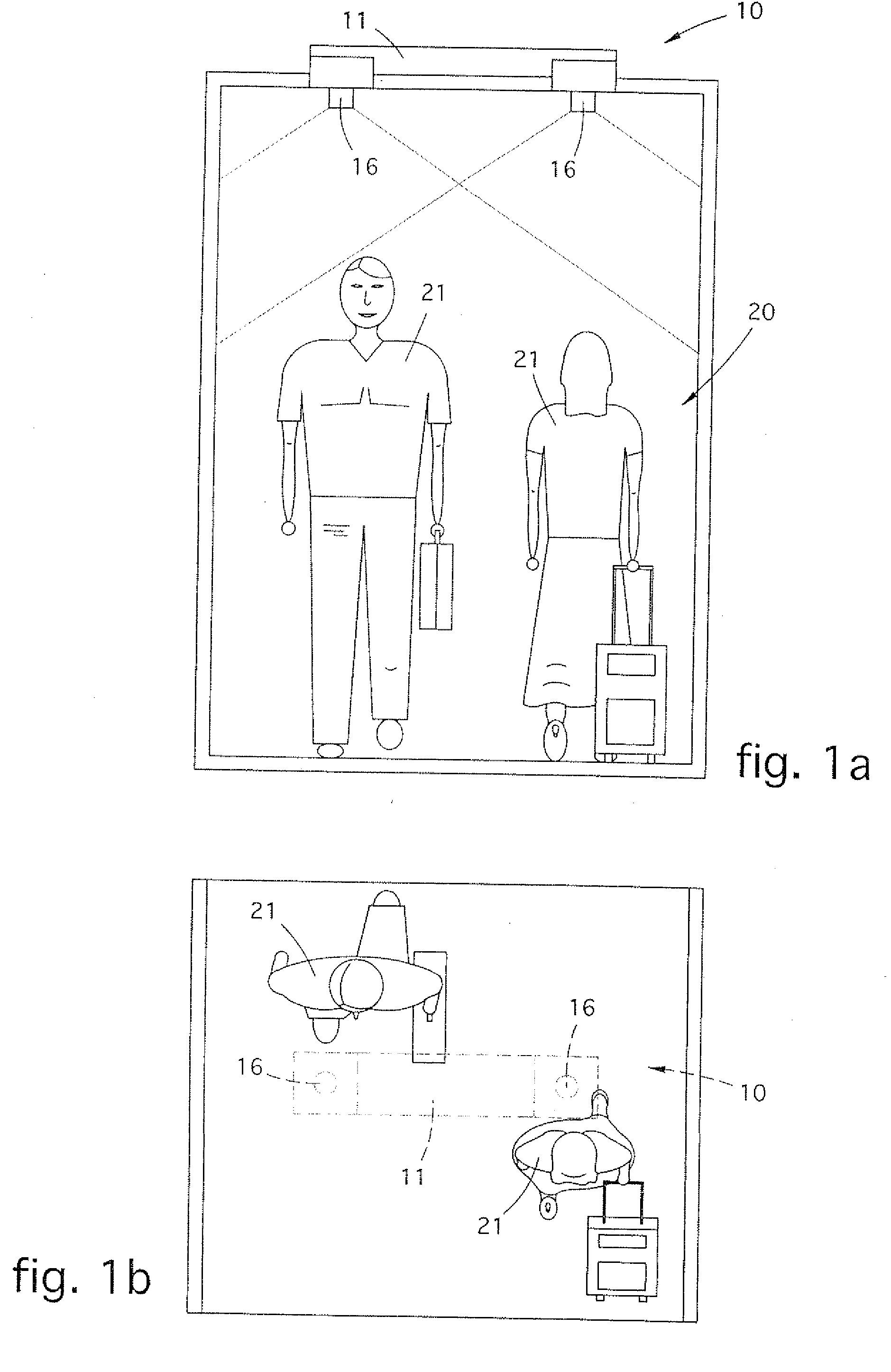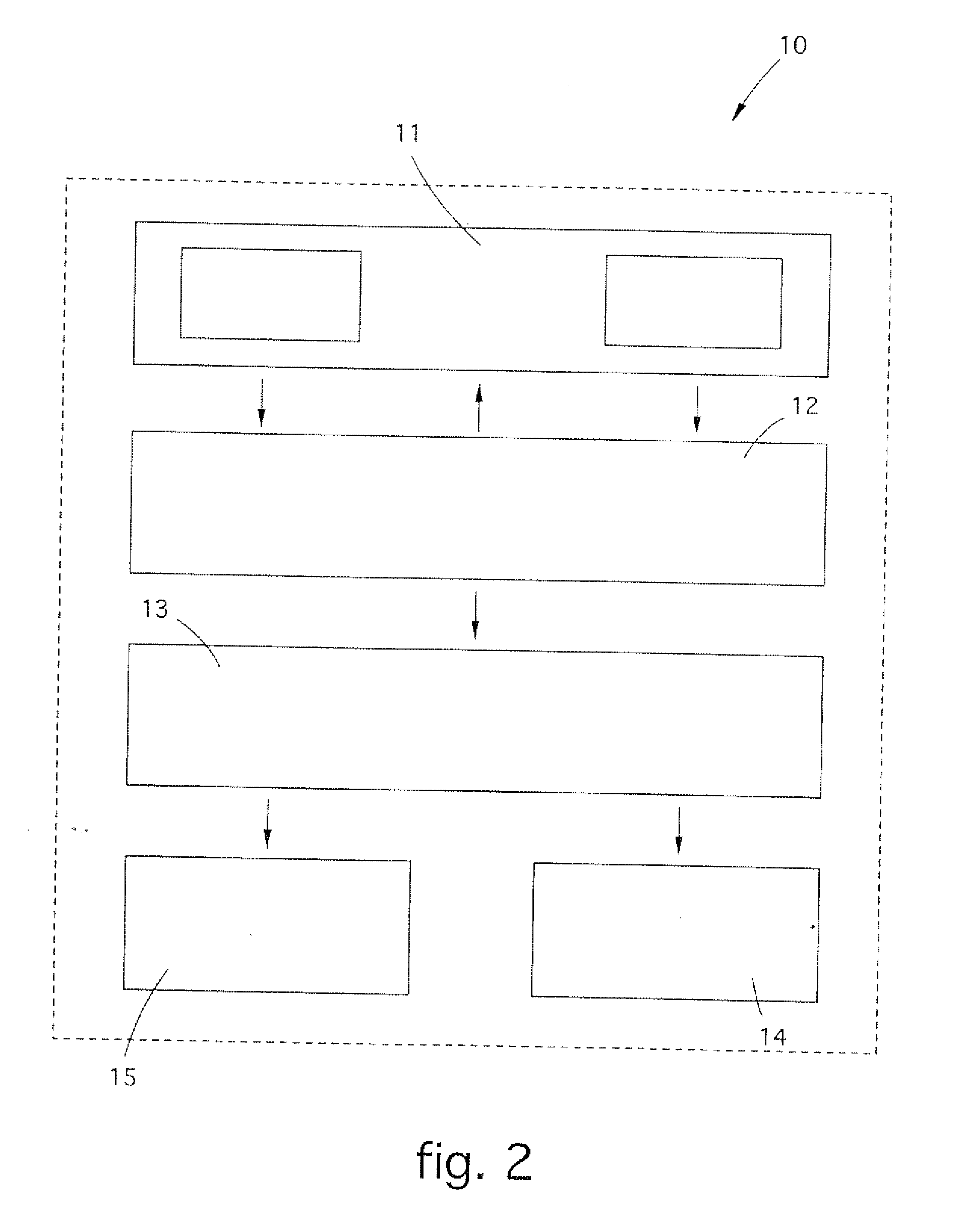Electro-optical device for counting persons, or other, based on stereoscopic vision, and relative method
- Summary
- Abstract
- Description
- Claims
- Application Information
AI Technical Summary
Benefits of technology
Problems solved by technology
Method used
Image
Examples
Embodiment Construction
[0037] In FIG. 1, the device 10 is shown mounted above a gate, indicated in its entirety with the reference number 20, so that the entry and exit movement of a person 21 passing through it is ideally perpendicular to the line joining the two optics and that the viewing plane is parallel to the floor. Preferably, the distance of the device 10 from the floor must be at least 240 cm in order to guarantee the accuracy of the counting.
[0038] In the configuration step for counting persons, the neural network of the device 10 is trained to recognize the three-dimensional form of a person seen from above.
[0039] With reference to FIG. 2, the device 10 according to the present invention comprises, as essential parts, an image acquisition unit 11, a parallel calculation unit 12 dedicated to the rectification of the images and to the calculation of the distance maps, a processing / calculation unit 13 to recognize the three-dimensional forms based on neural networks and to calculate the traject...
PUM
 Login to View More
Login to View More Abstract
Description
Claims
Application Information
 Login to View More
Login to View More - R&D
- Intellectual Property
- Life Sciences
- Materials
- Tech Scout
- Unparalleled Data Quality
- Higher Quality Content
- 60% Fewer Hallucinations
Browse by: Latest US Patents, China's latest patents, Technical Efficacy Thesaurus, Application Domain, Technology Topic, Popular Technical Reports.
© 2025 PatSnap. All rights reserved.Legal|Privacy policy|Modern Slavery Act Transparency Statement|Sitemap|About US| Contact US: help@patsnap.com



